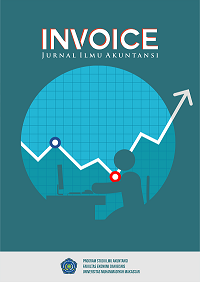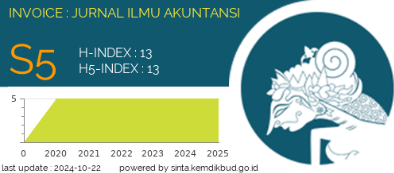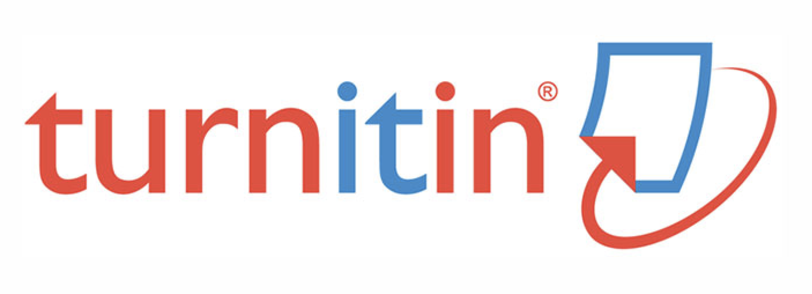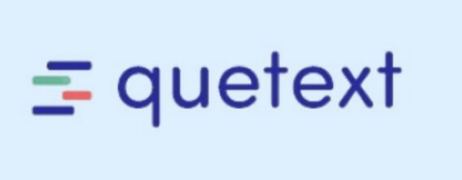Financial Distress Prediction with Grover Model: Case Study of PT Surya Pangan Indonesia
DOI: https://doi.org/10.26618/inv.v6i2.15681
Abstract
This research aims to predict financial distress at PT Surya Pangan Indonesia using the Grover model and analyze the results using the Springate model. The study employs quantitative data sourced from the financial reports of PT Surya Pangan Indonesia for the years 2018, 2019, and 2020. The data analysis technique involves calculating financial ratios and applying the Grover and Springate models to determine the company's financial health. According to the Springate model, a score above 1.062 indicates a healthy financial condition, while a score below 0.862 suggests a serious threat of bankruptcy. The results reveal that in 2018 and 2019, PT Surya Pangan Indonesia was in a healthy financial state with Springate scores of 3.748 and 1.174, respectively. However, in 2020, the score dropped to 0.564, indicating severe financial distress. The decline is attributed to decreased profitability and sales amid the pandemic and fluctuating corn prices. This study underscores the importance of early financial distress detection using predictive models, enabling companies to implement corrective measures before reaching a crisis. The findings suggest that PT Surya Pangan Indonesia must enhance its financial management strategies to prevent future distress. Additionally, future researchers are encouraged to compare different financial distress prediction models, such as the Ohlson and Altman models, to develop a more comprehensive understanding of financial health in the Indonesian business context.
References
Adriana, AN and Rusli. 2012. “Using Bankruptcy Prediction Analysis Springate Method for Foods and Beverages Companies Registered in Indonesian Stock Exchange 2006-2010 Period”. Repository Journal. FE University Riau.
Brigham, Eugene F. Gapenski, Louis C. 1997. Financial Management Theory and Practice. Orlando : The Dryden Press
Darmawi, Herman. 2006. Management Insurance . Jakarta: Earth Script.
Endri. 2009. “Bank Bankruptcy Predictions to Face and Manage Changes in the Business Environment: Analysis of Altman's Z-Score Model.” Perbanas Quarterly Review, 2(1).
Hadad, Santoso, Sarwedi. 2004. "Model Prediction Bankruptcy Bank General in Indonesia". Directorate Study And Arrangement Banking, Bank Indonesia.
Bond Indonesian Accountant. 2009 . Financial Accounting Standards. Jakarta: Salemba Four.
Bond Accountant Indonesia. 2009. Statement Standard Accountancy Finance (PSAK). Jakarta : Salemba Four.
Bond Accountant Indonesia. 2009. Accountancy Introduction I . Jakarta : Salemba Four.
Indonesian Accountants Association. 2015. Financial Accounting Standards. Jakarta: Salemba Four.
Cashmere. 2008. Bank And Institution Finance Other. Jakarta: PT. King Grafindo Homeland.
Kompas.com, 2021.
Lizal, Lubomir. 2002. “Determinants of Financial Distress: What Drives Bankruptcy in a Transitions Economy? The Czech Republic Case”, No. 451
Luciana, Almilia, And Kristijadi, 2003. "Analysis Ratio Finance For Predict Condition Financial Distress Company Manufacture Which Listed on the Jakarta Stock Exchange. Indonesian Journal of Accounting and Auditing (JAAI),” Volume 7 Number 2.
Munawir, Ahmad, Lukman, 2018. System Information Management Book Reference.
Institution US , Banda Aceh.
Purwanti, Yulia. 2005. "Financial Ratio Analysis in Predicting Conditions Finance Financial Distress Company Manufacture Which Registered in Exchange Effect Jakarta. ” Thesis. University Islam Indonesia.
Platt, H., MB Platt. 2002. Predicting Financial Distress. Journal of Finance Service Professionals, Vol. 56, p. 12-15
Rismawaty. 2012. "Comparative Analysis of Financial Distress Prediction Models Altman, Springate, Ohlson, And Zmijewski”. Thesis, Major Accountancy Faculty Economics and University Business Hasanuddin Makassar
Ross, A. S., R. W. Westerfield., And B. D. Jordan. 2008. Fundamentals of Corporate Finance, 9th Ed. New York: Mc Graw-Hill.
Sawir, Agnes. 2009. " Financial Performance Analysis and Financial Planning Company." Jakarta: PT. Scholastic Main Library.
Soemarso. 2004. Accountancy Something Introduction . Jakarta : Salemba Four. Springate, G. 1978. “ Predicting The Possibility of Failure in a Canadian Firm.
[Thesis]. Burnaby (CN)” : Simon Fraser University.
Syamsudin, Lukman. 2006. Corporate Financial Management. Jakarta: PT Raja graphindo Homeland.
Warren, Carl S., James M. Reeve and Jonathan E. Duchac, 2018, Financial and Managerial Accounting, 14th Edition, Cangage Learning, Boston – United State of America, Boston MA 02210, 20 Channels Center Street.
Warsono. 2003. Management Finance Company. Volume 1. Bayu Media Publishing. Poor.
Downloads
Published
Issue
Section
License
Authors who publish with Invoice: Jurnal Ilmu Akuntansi agree to the following terms:
-
Copyright Ownership
The copyright of all articles published in this journal remains with the author(s). However, the authors grant Invoice: Jurnal Ilmu Akuntansi the right of first publication with the work simultaneously licensed under a Creative Commons Attribution 4.0 International License (CC BY 4.0). This license allows others to share, copy, redistribute, adapt, and build upon the work for any purpose, even commercially, as long as proper credit is given to the original author(s) and the source. -
Licensing and Access
Invoice: Jurnal Ilmu Akuntansi provides immediate open access to its content on the principle that making research freely available to the public supports a greater global exchange of knowledge. All published materials are available freely without subscription or payment and can be accessed, downloaded, and reused by any user provided that appropriate attribution is given. -
Permission for Reuse
For uses not covered by the CC BY 4.0 license, such as commercial reprints, translations, or any form of adaptation without clear attribution, users must obtain written permission from the editorial team. Requests for such permissions can be directed to the editorial office at: [invoice@unismuh.ac.id]. -
Plagiarism and Originality
Authors are responsible for the originality of their submissions. All articles are screened for plagiarism using appropriate tools before acceptance. Manuscripts found to contain unoriginal content or infringing materials will be rejected or retracted as per journal policy.














